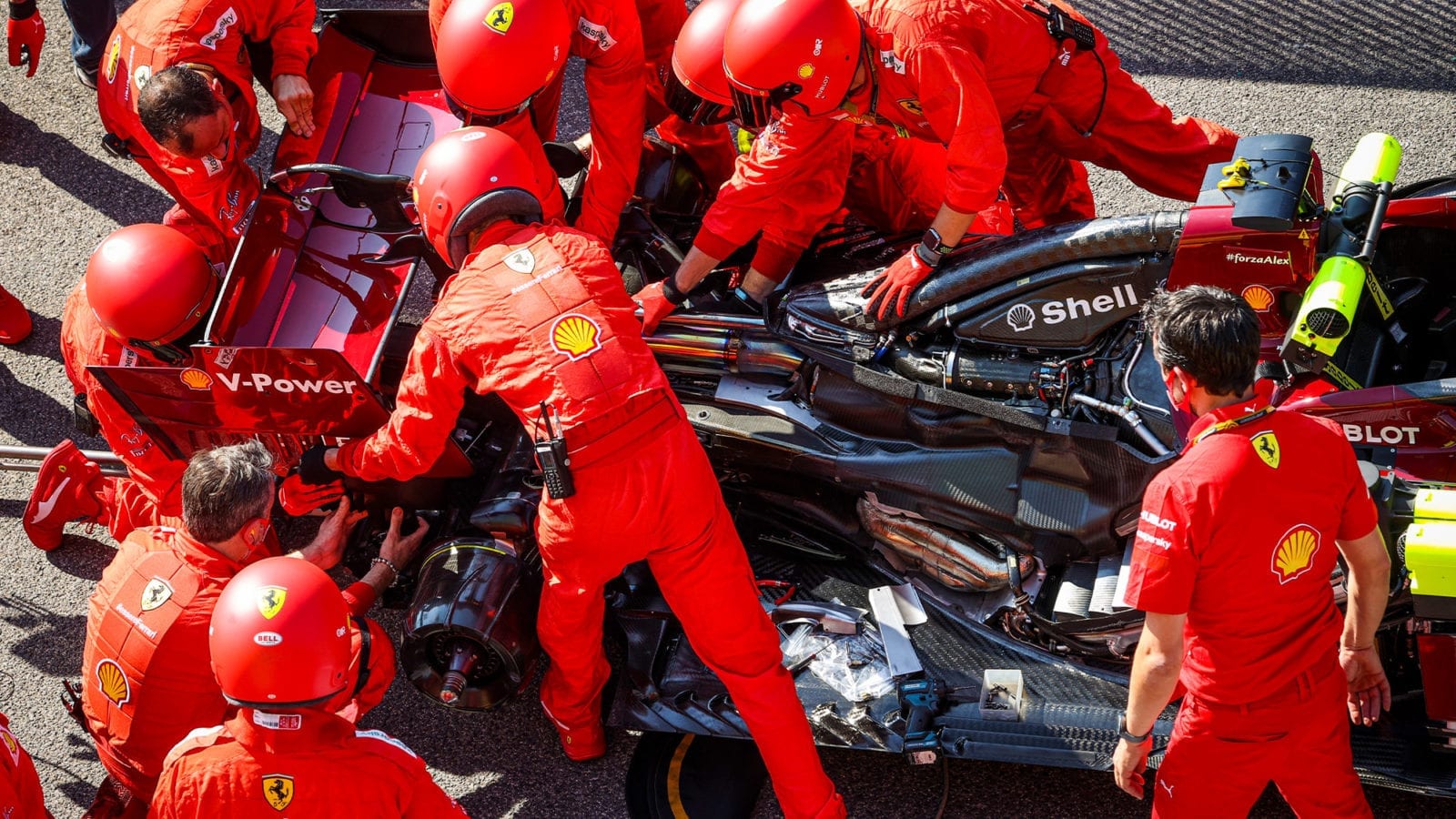Mark Hughes: Electric F1 cars without downforce? It's one option
Honda's announcement that it will leave Formula 1 at the end of 2021 infers that F1 is no longer aligned with future automotive R&D. So what happens next?

Could F1 cars become electric — or will simpler engines prevail?
DPPI
Honda’s announcement that it will quit F1 at the end of next season was obviously a pretty serious blow to the category, leaving just two automotive companies involved (in addition to Ferrari) from 2022 onwards and no prospect of any new ones joining under the current hybrid power unit regulations, set to run to the end of 2025. But of more concern than the fact of Honda’s withdrawal should be the reasons it gave for the decision. “As the automobile industry undergoes a once-in-a- hundred-years period of great transformation,” said the company’s group CEO Takahiro Hachigo, “Honda has decided to strive for the realisation of carbon neutrality by 2050. As a part of this change, we decided to allocate our energy management and fuel technologies, as well as our human resources amassed through F1 activities, to the research and development of advanced power units and energy technologies.”
Honda believes its long-term survivability depends upon meeting the environmental challenge and that it needs the brains and resource from its F1 power unit programme to help it do that – but not F1 itself. The inference is that F1 is no longer aligned with future automotive R&D, that further knowledge of units is no longer relevant.
The automotive mass market future is some form of electric, either battery electric or hydrogen fuel cell electric. Until the energy from which the electricity grid is powered is itself renewable, the environmental advantages of a battery electric car are not there. The battery electric car needs to cover between 80,000-220,000 miles before it covers the environmental cost of the production of its batteries compared to a petrol car. The hydrogen cell is even more environmentally costly to manufacture. That switchover point comes down drastically – to 18,000 miles for battery electric – if the electricity grid is derived from renewables only. Automotive companies are planning on the wider world sorting out renewable-powered grids and when that has happened, they need to have the appropriate cars ready to take advantage. As such, electric racing looks to have a far better chance of being relevant to automotive R&D than hybrids.
“What if the entire sport, not just Formula 1, forgot about downforce?”
Formula E uses battery electric cars. They can race for 45 minutes at lap speeds slower than those of an F3 car. What would be required for F1-appropriate speeds and GP duration? Ostensibly, a battery with around 10 times the density of the best technology available today. F1 is great at accelerating technology, but not to the extent of a tenfold advance.
It would be relatively simple to make the Formula E car much faster than it is, but not to the extent that it could be anywhere near F1 lap times or durability, as current Formula E driver Lucas di Grassi explains. “By doubling the powertrain – putting the rear powertrain we have now in the front as well, it would increase power to 500kW [670bhp]. Because it would then be four- wheel-drive it would accelerate 0-200kmh [124mph] in about the same time as F1 and because you would then have energy recovery from two axles rather than one, you could reduce the size of the battery so the car weighed the same but had twice the power. I have calculated it would cost only seven per cent more than currently. So straight away the car would be much faster but lasts the same amount of time.”
Although its straight-line performance would be comparable to an F1, lap times would be light years away. The Formula E car carries almost no downforce. As soon as you introduce downforce and the squaring resistance of drag, the battery drains like a sieve. Seven hundred horsepower of battery with current levels of F1 downforce would have the battery spent in 15 minutes! Not much of a grand prix.
What if the entire sport, not just Formula 1, forgot about downforce? That way you could still have an electric F1 as the notional pinnacle series. Yes, Formula E has exclusivity rights to electric-powered single-seaters but that can be solved very simply – with cash.
“There is a triangle of demands,” says Di Grassi. “You want entertainment, affordable costs and R&D. But it’s such a delicate balance. Make it too R&D heavy and you end up with domination by whoever does the most of it, like Ferrari in the 2000s or Mercedes now. To get competition between the cars you need to limit the R&D, but not so much that the manufacturers can’t develop their technology. And it needs to be affordable. A Formula E car costs around $1m. An F1 car about $20m.”
It also needs to remain impressive. “It can’t be so slow that it’s perceived to be easy,” agrees Di Grassi. “It needs to be very quick, with very aggressive acceleration and top speed, but not necessarily lap time. I think there could be a much sweeter sweet spot than we have.”
Or F1 might at some point consider not even trying to align with the automotive manufacturers. It was they, after all, who pressed for the hybrid formula yet only three of them joined (if we exclude Ferrari on the assumption it would be there regardless) and soon it will be back to two. It might consider the risky idea of going outlaw and reintroducing petrol engines, much smaller than the hybrids. Like for example a three-cylinder, turbocharged 1-litre screamer in a lightweight car that would use less fuel than the hybrids, even if not so efficiently. There’s a fork in the road and F1 will need to decide soon which one it is taking.

